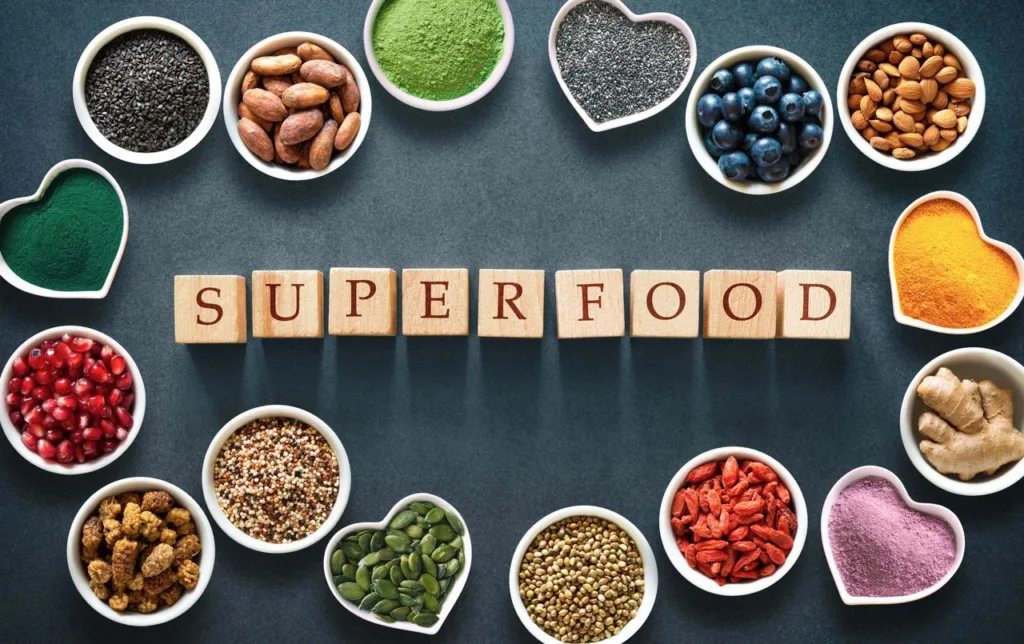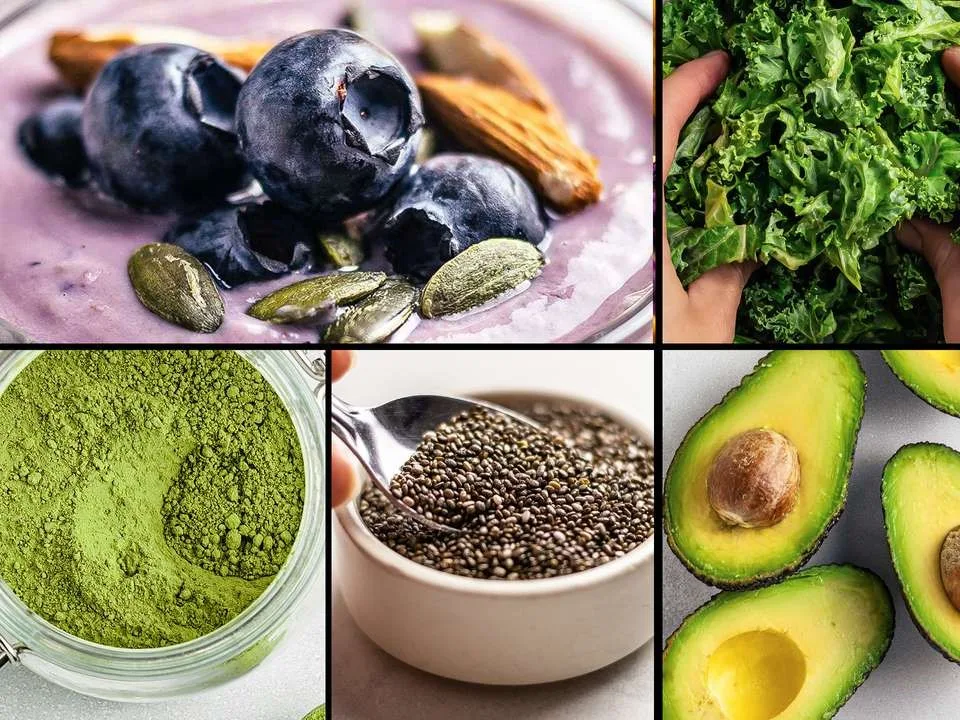In the pursuit of a healthier and slimmer lifestyle, individuals often turn to various diets and weight loss strategies. One approach gaining popularity is the integration of super foods into daily nutrition. Super foods are nutrient-rich, offering a plethora of health benefits while aiding in weight loss. Let’s explore the world of super foods and understand how incorporating these powerful nutrients can enhance your weight loss journey.

What Are Super Foods?
Superfoods are natural, nutrient-dense foods that are rich in vitamins, minerals, antioxidants, and other essential nutrients. These foods are known for their ability to promote overall well-being and can be instrumental in achieving weight loss goals. Incorporating super foods into your diet can provide the body with the necessary tools to function optimally. It’s important to note that while these super foods can be part of a healthy diet, there’s no single magic food for weight loss. A balanced diet, regular physical activity, and lifestyle factors all play crucial roles in achieving and maintaining a healthy weight. Here’s a list of super foods that are often related with potential benefits for weight loss:
- Green Tea
- Berries (e.g., Blueberries, Strawberries, and Raspberries)
- Avocado
- Quinoa
- Chia Seeds
- Salmon
- Leafy Greens (e.g., Spinach, Kale)
- Beans and Legumes
- Greek Yogurt
- Cinnamon
- Broccoli
- Garlic

The Power of Nutrient Density:
Superfoods stand out due to their high nutrient density, meaning they pack a significant nutritional punch in a relatively small serving. This characteristic is crucial for those seeking to lose weight, as it allows individuals to consume essential nutrients without excess calories. Nutrient density refers to the concentration of essential nutrients—such as vitamins, minerals, antioxidants in a given portion of food. While calorie content remains a critical factor, emphasizing nutrient-dense foods ensures that the body receives the vital substances it needs for optimal function.
The power of nutrient density for weight loss lies in its ability to shift the focus from mere calorie reduction to the quality of food consumed. By prioritizing nutrient-dense foods, individuals can achieve satiety, support overall health, and create a sustainable foundation for weight management. Nutrient-dense foods contribute to satiety, helping to control cravings and promote a feeling of fullness, which can be beneficial in weight management. One of the primary benefits of prioritizing nutrient-dense foods is their ability to promote satiety. When meals are rich in nutrients, the body’s hunger signals are more effectively regulated, reducing the likelihood of overeating. This not only aids in weight management but also helps individuals maintain a sustainable and enjoyable relationship with food.

Super foods for Weight Loss:
a) Berries: Nature's Antioxidant-Rich Treat:
b) Leafy Greens: Nutrient-Rich and Low in Calories:
Spinach, kale, and Swiss chard are excellent sources of vitamins, minerals, and fiber. They are low in calories and high in nutrients, making them valuable additions to a weight loss diet. They provide vitamins, minerals, and antioxidants while adding volume to meals. The fiber content aids in digestion, and the combination of nutrients supports overall health and weight loss.
c) Quinoa: The Complete Protein:
As a whole grain, quinoa is a complete protein that provides sustained energy. Its high fiber content helps regulate blood sugar levels and contributes to a longer-lasting feeling of fullness. Quinoa is a versatile whole grain that stands out due to its high protein content and unique amino acid profile. Unlike many grains, quinoa is a complete protein, making it an excellent choice for vegetarians and vegans. The protein content helps maintain muscle mass during weight loss and contributes to a longer-lasting feeling of fullness.
d) Salmon: Omega-3 Fatty Acids for Metabolic Boost:
e) Avocado: The Healthy Fat Source:
f) Green Tea:
g) Chia Seeds: Tiny Seeds, Big Benefits:

Practical Tips for Incorporating Super foods:
- Smoothies: Blend a variety of superfoods into delicious and nutritious smoothies for a convenient and satisfying meal or snack.
- Salads: Create vibrant salads with a mix of leafy greens, berries, and other super foods for a nutrient-packed and low-calorie meal.
- Grain Bowls: Incorporate quinoa, lean proteins, and a variety of colorful vegetables into grain bowls for a well-balanced and filling meal.
- Snacking: Choose super food snacks like nuts, seeds, to satisfy cravings while providing essential nutrients.
- Plan Balanced Meals: Incorporate a variety of super foods into each meal to ensure a well-rounded and balanced diet. Focus on achieving a mix of protein, healthy fats, and carbohydrates for sustained energy throughout the day.
- Social Support: Share your goals with friends or family members who can provide support and encouragement. Join a community to consider joining a weight loss or fitness community for shared experiences and motivation.
- Set Realistic Goals: Gradual Changes make small, sustainable changes to avoid feeling weighed down. Gradual adjustments are more likely to become lasting habits. For weight loss track progress Keep a food and activity journal to monitor your habits and celebrate achievements along the way.
- Regular Exercise: Find enjoyable activities, Engage in physical activities you enjoy, whether it’s walking, cycling or sports. This makes it easier to stay consistent.
- Incorporate Strength Training: Building muscle helps boost metabolism, contributing to long-term weight management.
- Create a Realistic Routine: Consistent Meal Times: Establish regular meal times to regulate metabolism and prevent excessive snacking. Quality Sleep is necessary for overall health try for 7-9 hours of quality sleep per night. Lack of sleep can disrupt hormones that regulate appetite and lead to weight gain.
- Limit Liquid Calories: Be cautious of high-calorie beverages, and opt for water, herbal tea, or other low-calorie options.
- Reduce Added Sugars: Minimize the consumption of sugary beverages and deserts, as they can contribute to excess calorie intake.
- Portion Control: Be mindful of portion sizes to avoid overeating. Use smaller plates to help control portions.

Here few weight loss exercises:
Interval Running:
- Warm up with a brisk walk for 5 minutes.
- Alternate between 1 minute of sprinting and 2 minutes of jogging for a total of 20 minutes.
- Cool down with a 5-minute brisk walk.
Bodyweight Circuit:
- Perform 15 squats.
- Follow with 10 push-ups.
- Do 20 lunges (10 per leg).
- Complete 15 burpees.
- Rest for 1 minute and repeat the circuit 3 times.
Jump Rope Session:
- Jump rope for 30 seconds at a high intensity.
- Rest for 30 seconds.
- Repeat for a total of 15 minutes.
Cycling Intervals:
- Cycle at a moderate pace for 5 minutes as a warm-up.
- Pedal at maximum effort for 1 minute.
- Recover at a slow pace for 2 minutes.
- Repeat the high-intensity intervals for a total of 30 minutes.
Swimming Workout:
- Swim freestyle for 10 minutes as a warm-up.
- Perform 10 sets of 50-meter sprints with 20 seconds rest between sets.
- Cool down with 10 minutes of easy swimming.
Stair Climbing:
- Find a set of stairs and climb briskly for 15 minutes.
- Take two steps at a time for an added challenge.
- Descend slowly to engage different muscles.
Dance Cardio:
- Choose an energetic dance workout routine.
- Dance continuously for 30 minutes, focusing on large movements and staying active


